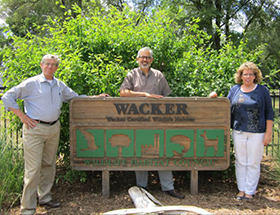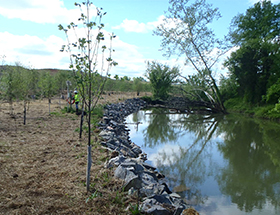Nature Conservation and Biodiversity
Our environmental-protection efforts to conserve resources and reinstate habitat help maintain the balance of species. Burghausen’s Site Planning unit develops strategies for limiting land use.
We carefully assess the impact that site expansions may have on nature and biodiversity and – in consultation with the authorities – implement environmental mitigation programs to offset these impacts. Take the expansion of our polysilicon production facilities at Burghausen and Nünchritz, for example. We replaced every tree felled during construction of the new polysilicon production facility on the 1.3-km2 Nünchritz site with a native species. In the Seusslitzer Grund Nature Reserve, a five-hectare area has been reforested with oak, beech and linden trees.
Covering 232 hectares (about the same size as Munich’s historic downtown district), our Burghausen site borders a Natura 2000 nature reserve alongside the Salzach river. To check whether the operation of our facilities has any effect on this reserve, we regularly monitor our air pollution levels. In this regard, we had an external consultant compile an environmental-exposure register for the site. The results show that emissions into the atmosphere at the site do not significantly impact the nature reserve.
A group of employees at our US site in Adrian (Michigan) has set up nesting boxes for various species of bird and maintains a 2.4-km nature trail. The 97-hectare site premises also feature wildflower and butterfly gardens. An almost 81-hectare outdoor area has been certified for the conservation of wildlife. The employees are dedicated to nature and wildlife conservation and concentrate on themed groups – including insects and bats. For its dedication, the Adrian team was once again awarded the US Wildlife Habitat Council’s Wildlife at WorkSM certificate in the period under review.
Natural Habitat by the Creek in Charleston
We have created three wetland mitigation areas at our new US site in Charleston, Tennessee, and re-naturalized an existing stream. We planted approximately 800 trees along a 490-meter stretch of the South Mouse Creek bank and stabilized the stream bank by planting a further 1,320 new trees adjacent to it. The diverse range of newly planted trees includes American witch hazel, river birch, sycamore, eastern redbud, black cherry, black walnut and tulip trees, which are all native to Tennessee. With this project, we have helped to maintain the natural habitat on the stream bank and filter the water naturally.

